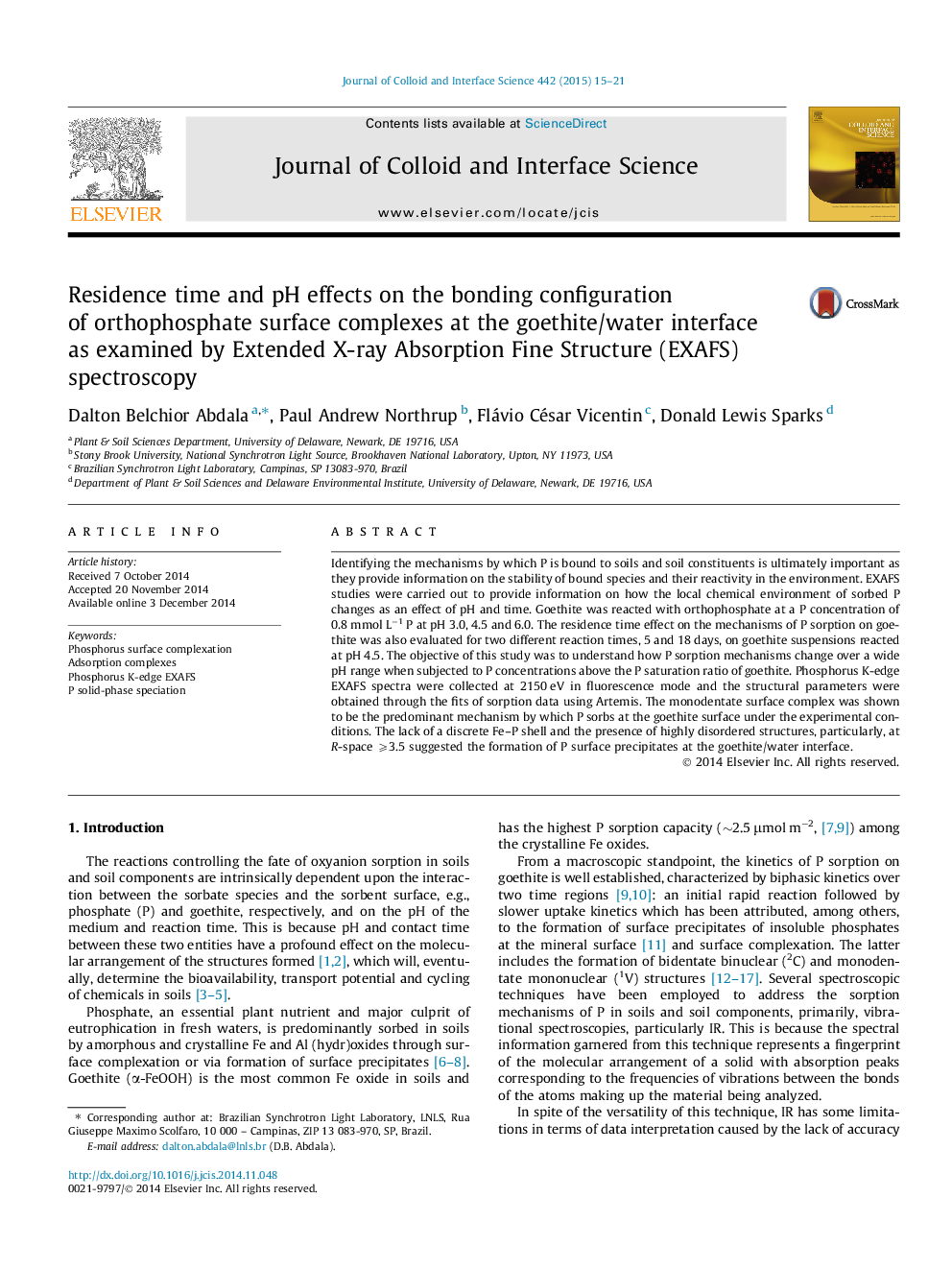| کد مقاله | کد نشریه | سال انتشار | مقاله انگلیسی | نسخه تمام متن |
|---|---|---|---|---|
| 606851 | 1454553 | 2015 | 7 صفحه PDF | دانلود رایگان |

• Feasibility of EXAFS spectroscopy to study P surface complexation at mineral/water interfaces.
• Residence time played a more marked effect on P–Fe distances than did changes in pH under the studied conditions.
• Longer exposure times between P and goethite resulted in surface complexes with shorter P–Fe distances.
• Consequently, shorter exposure times may favor a greater reversibility of phosphate.
Identifying the mechanisms by which P is bound to soils and soil constituents is ultimately important as they provide information on the stability of bound species and their reactivity in the environment. EXAFS studies were carried out to provide information on how the local chemical environment of sorbed P changes as an effect of pH and time. Goethite was reacted with orthophosphate at a P concentration of 0.8 mmol L−1 P at pH 3.0, 4.5 and 6.0. The residence time effect on the mechanisms of P sorption on goethite was also evaluated for two different reaction times, 5 and 18 days, on goethite suspensions reacted at pH 4.5. The objective of this study was to understand how P sorption mechanisms change over a wide pH range when subjected to P concentrations above the P saturation ratio of goethite. Phosphorus K-edge EXAFS spectra were collected at 2150 eV in fluorescence mode and the structural parameters were obtained through the fits of sorption data using Artemis. The monodentate surface complex was shown to be the predominant mechanism by which P sorbs at the goethite surface under the experimental conditions. The lack of a discrete Fe–P shell and the presence of highly disordered structures, particularly, at R-space ⩾3.5 suggested the formation of P surface precipitates at the goethite/water interface.
Figure optionsDownload high-quality image (45 K)Download as PowerPoint slide
Journal: Journal of Colloid and Interface Science - Volume 442, 15 March 2015, Pages 15–21